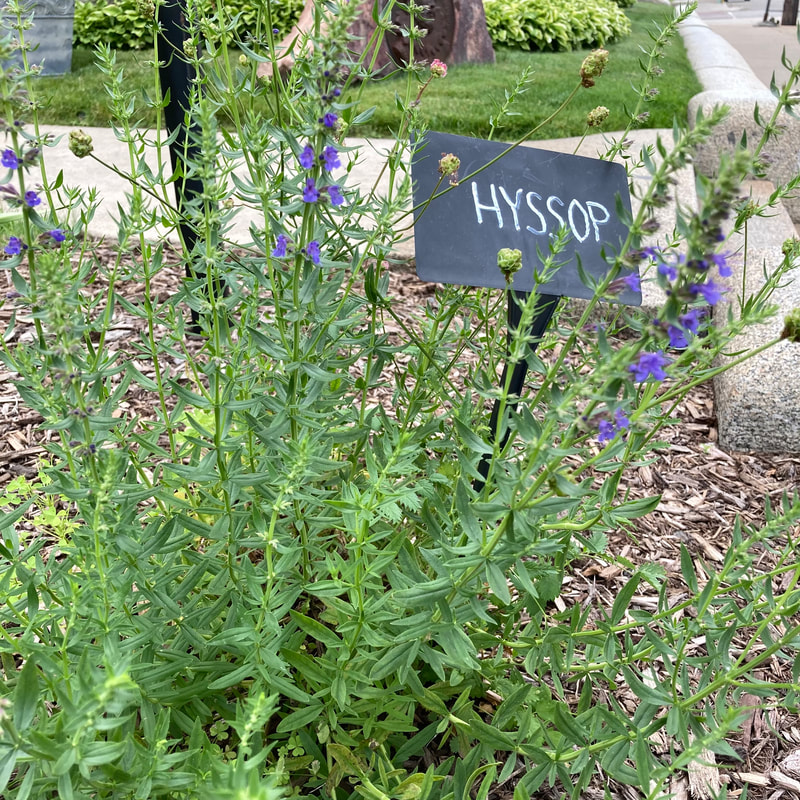|
Article and photo by Donna Iverson Hyssop isn’t a plant you will find in most home gardens. But you will find it in a Shakespeare garden, like the one next to the Hackley Public Library in Muskegon. Shakespeare refers to many Elizabethan herbs in his plays including thyme, lavender, mint, burnet, parsley, and of course hyssop. Specifically, he refers to planting hyssop in Othello, Act 1. An ancient herb, hyssop (hyssopus officinalis) is a member of the mint family along with other popular garden herbs like salvia, sage, lavender, and oregano. It is native to the Mediterranean area although it has naturalized in some places in the US, especially California. Hyssop is popular with pollinators, both butterflies and bees. Its fragrant delicate blue flowers grow on plants that average about two feet tall. It is drought tolerant, easy to grow, low maintenance and edible. It would add charm and fragrance to a cottage garden, rock garden, herb garden, patio garden and along walkways. It is happy to grow in a container although its extensive root system requires an extra large pot to thrive. It blooms continually from June to October. In the kitchen, Hyssop’s young leaves can be added to stews, soups and sauces. Commercially, it is added to liquors like Chartreuse and Benedictine. It is also effective as an air freshener and can be used in potpourris. Medicinally, a herbal tea can be made with hyssop that is used for digestive and intestinal problems as well as for respiratory infections and asthma. It is both antiseptic and an expectorant. However, persons with high blood pressure, epilepsy, or pregnancy should avoid it. And hyssop oil should never be taken internally by anyone. In earlier times and in certain modern circles, hyssop is referred to as a magical herb. Herbalist Michelle Gruben recommends carrying a sprig of hyssop in your pocket to protect against unkind thoughts sticking to you. She suggests adding it to your bath for the same purpose. And like sage, it can be used to cleanse a room of bad energy. In ancient times, hyssop was used to purify churches. While hyssop is not native, Giant Hyssop (Agastache scrophuliifolia) is native to the US. It grows along woodland edges to a height of six feet, usually in damp soil. Other names include anise hyssop and licorice plant.
0 Comments
Your comment will be posted after it is approved.
Leave a Reply. |
Archives
April 2024
Categories |

 RSS Feed
RSS Feed